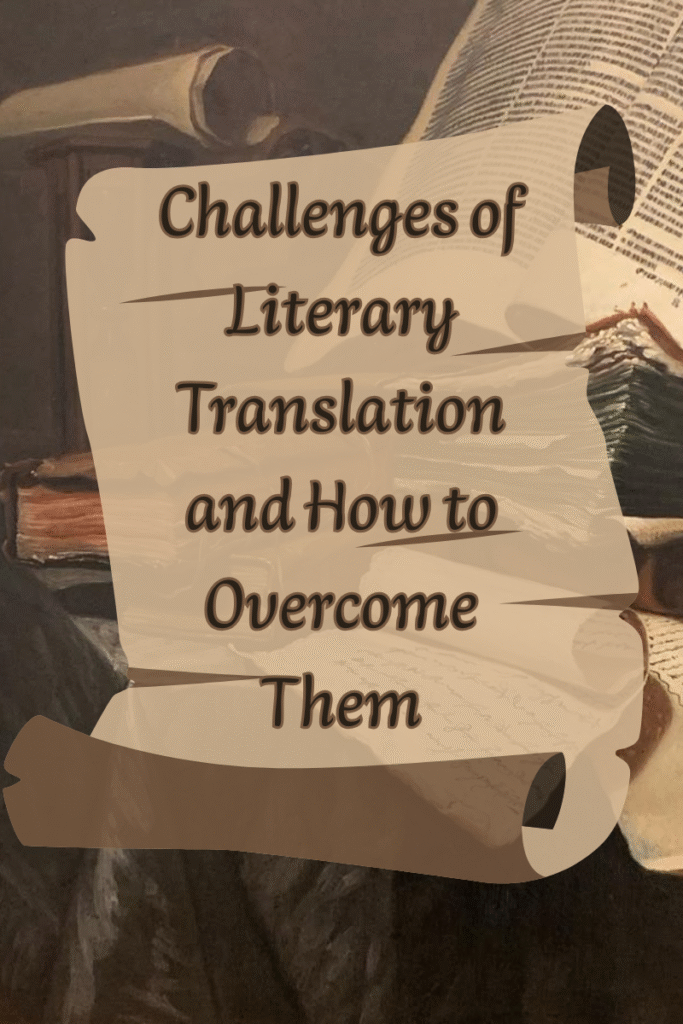Literary translation is one of the most vital and influential areas of the translation industry, allowing authors from diverse genres to share their voices with readers across the globe. However, being central to the industry does not mean it comes without difficulties.
In fact, literary translation is often considered one of the most complex forms of translation, as it requires much more than linguistic accuracy. A literary translator must capture the author’s unique style, voice, and emotional depth, ensuring that the translated work feels just as authentic and imaginative as the original.
Unlike technical or business translation, literary translation cannot simply follow a word-for-word approach. Instead, it demands creative adaptations, where the text is reshaped in the target language while preserving its artistic essence. Achieving this balance, staying faithful to the source while making it resonate naturally in the target culture — is what makes literary translation both challenging and rewarding.

Key Challenges in Literary Translation
1. Cultural Context and Nuance: Bridging Two Worlds
Literary texts are deeply tied to the culture they come from. Idioms, traditions, historical references, and daily life expressions often have no equivalent in the target language. A translator must find a way to bridge cultural gaps so the text feels authentic while remaining understandable for the reader.
2. Maintaining the Author’s Voice and Style: Staying True to the Original
Every author has a distinct narrative rhythm, tone, and stylistic fingerprint. If the translation loses this, the work no longer feels like the same book. The challenge lies in preserving this “authorial voice” while adapting it to the natural flow of the target language.
3. Linguistic Structure and Differences: When Grammar Gets in the Way
Languages differ in syntax, sentence length, verb tenses, and word order. For example, a long, flowing Spanish sentence might sound unnatural in English if translated literally. The translator must restructure without losing meaning or beauty.
4. Wordplay, Puns, and Humor: Recreating the Laughs
Puns, irony, and jokes rarely survive literal translation. A witty remark in the source language may fall flat in the target if not reimagined. Translators need to be as creative as comedians to preserve humor’s effect.
5. Literary and Poetic Devices: Keeping the Beauty Alive
Metaphors, rhyme, rhythm, and alliteration give literature its music. But these devices often resist direct translation. Losing them risks stripping away the artistry that makes a work memorable.
6. Connotation and Emotional Impact: Finding the Right Feeling
Words carry not only dictionary meaning but emotional weight. For instance, the word “home” carries warmth beyond its literal meaning. Translators must select words that evoke the same emotional impact for the target audience.
7. Consistency and Terminology: Ensuring Coherence Throughout the Text
Literary works often contain recurring motifs, symbolic terms, or character speech patterns. Consistency in these elements is crucial for coherence and character development. A shift in terminology can confuse readers and weaken the story.
8. Timing and Setting: Translating Context Beyond Words
Historical periods, geographical references, or culturally specific time markers can be misunderstood if not carefully handled. A translator needs to provide subtle context so the reader feels grounded without breaking the flow of the narrative.
Translation Solutions According to Amparo Hurtado
After exploring the many challenges of literary translation — from cultural nuance to wordplay, the natural question is: how can translators overcome them? This is where the work of Amparo Hurtado Albir, a leading figure in Translation Studies, becomes invaluable. Her translation strategies are widely recognized as practical tools for solving common problems in literary translation while keeping the balance between accuracy and creativity.
Here’s how her strategies can be applied in real literary translation work:
Adaptation: Making It Familiar for the Reader
Replacing a cultural reference with one that resonates in the target language ensures the reader experiences the same feeling as the original audience.
Compensation: Recovering What Gets Lost
When meaning, wordplay, or style cannot be directly translated, translators can insert a similar effect elsewhere to maintain the overall impact.
Linguistic Amplification: Adding Clarity Naturally
Sometimes the target text requires extra words to explain nuance. Adding them smoothly within the sentence helps preserve meaning without overburdening the reader.
Omission: Leaving Out What Isn’t Needed
Some elements, like redundant honorifics or culturally irrelevant phrases, can be omitted if they don’t affect comprehension. This prevents clutter in the target text.
Borrowing: Keeping Words that Carry Weight
Certain words are best left untranslated — either because they are unique (sobremesa, hygge) or because they enrich the cultural flavor. With context, readers can embrace these borrowed terms.
Literary translation is a balance between faithfulness and creativity. Translators face challenges such as cultural nuance, style, wordplay, and emotional resonance, but with the right strategies; adaptation, compensation, amplification, omission, and borrowing.We can recreate the author’s voice while making the text accessible and powerful for new readers.
As translators, we are not just language professionals but cultural mediators and storytellers. By mastering these techniques, we ensure that literature crosses borders without losing its beauty.
